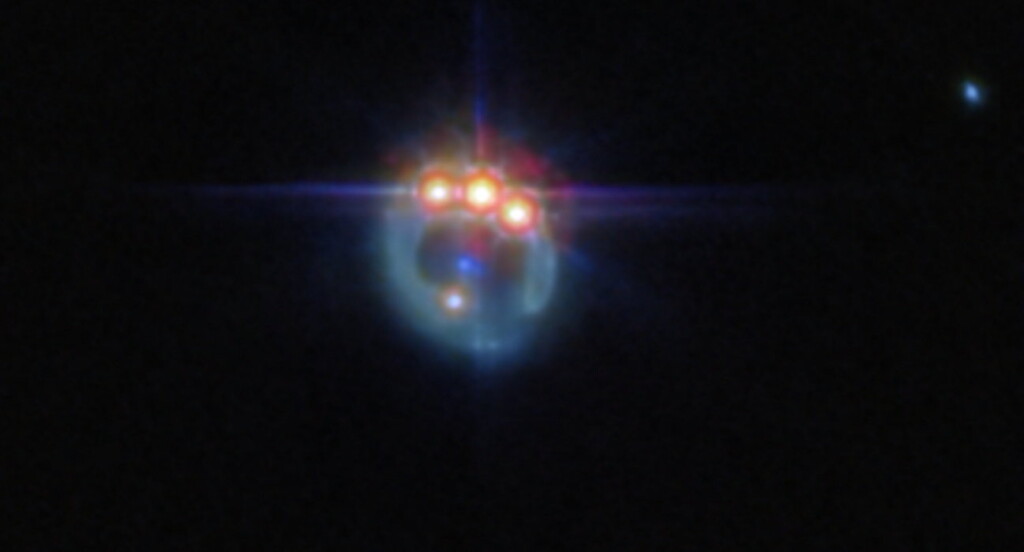Scientists Have Spotted a ‘Bejeweled Ring’ in Space – Revealing a Sparkling Quasar

An intriguing new image captured by the James Webb Space Telescope shows a quasar sparkling in the cosmos.
Quasars are the blazing centers of active galaxies, and are powered by supermassive black holes feeding on titanic quantities of gas.
Astronomers were able to observe the quasar, known as RX J1131-1231, thanks to gravitational lensing.
One of the consequences of gravitational lensing is that it can magnify distant astronomical objects, letting astronomers study objects that would otherwise be too faint or far away.
RX J1131-1231, located roughly six billion light-years from Earth in the constellation Crater, is considered one of the best lensed quasars discovered to date, showing the foreground galaxy smearing the image of the background quasar into a bright arc, created by four images of the object.
The composite was named the Webb Telescope’s ‘Picture of the Month’, and was described by the European Space Agency (ESA) as a “bejeweled ring”.
NASA shared the image with the heading, “Diamonds of the season,” explaining that these glittering “gems” are actually four images of the same thing — an extremely bright quasar.
Diamonds of the season 💎
These glittering “gems,” or glowing orange dots, are actually four images of the same thing — an extremely bright object known as a quasar: https://t.co/sELuB7cHjB
So how did Webb end up with multiple copies? ⬇️ pic.twitter.com/dGgbTJdf9W
— NASA Webb Telescope (@NASAWebb) July 5, 2024
According to a statement from ESA, gravitational lensing, first predicted by Einstein, offers a rare opportunity to study regions close to the black hole in distant quasars, by acting as a natural telescope and magnifying the light from these sources.
“All matter in the Universe warps the space around itself, with larger masses producing a stronger effect. Around very massive objects, such as galaxies, light that passes close by follows this warped space, appearing to bend away from its original path by a clearly visible amount.”
This image was captured with Webb’s MIRI (Mid-Infrared Instrument) as part of an observation program to study dark matter, an invisible form of matter that accounts for most of the Universe’s mass.
LOOK SKYWARD IN LATE JULY! Two Meteor Showers Peak in the Same Region of the Sky on the Same Night This Month
Webb’s observations of quasars are allowing astronomers to probe the nature of dark matter at smaller scales than ever before.
SHARE THIS GEM With Astronomy Fans on Social Media…
>read more at © GoodNews
Views: 3